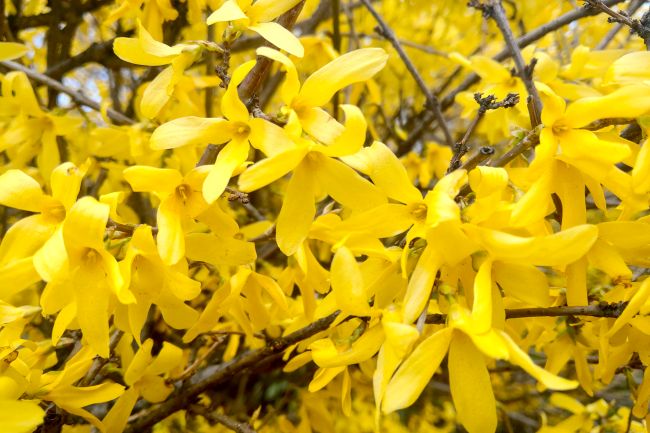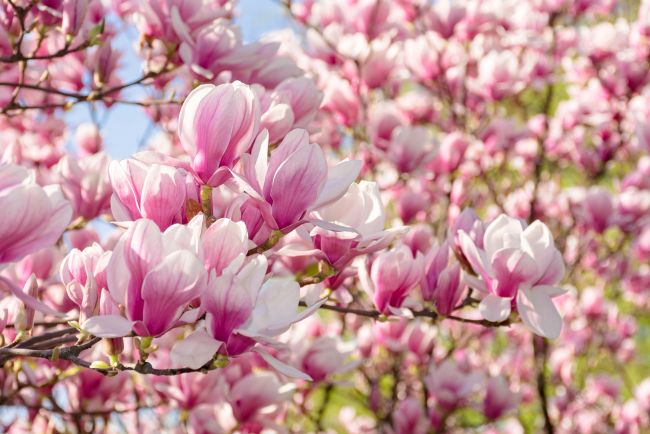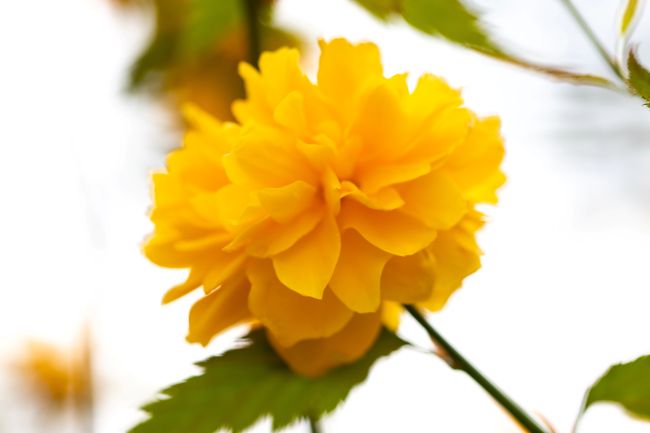Pruning Spring Flowering Shrubs: A Quick Guide

Forsythia flowers
As spring flowering shrubs such as Ribes, Forsythia, cherry trees, Camellias, and Magnolias come to the end of their blooming season in the next couple of weeks, it’s the perfect time to focus on pruning and shaping. Proper pruning not only maintains the health and appearance of your shrubs but also encourages a vibrant, abundant display of flowers next spring.
Understanding Spring Flowering Shrubs
Spring flowering shrubs typically produce flowers on wood or growth formed during the last growing season or even the one before. This is especially true for species such as Quince and Ceanothus. The growth produced this year, especially through the spring and summer months, will be responsible for producing flowers in the spring of 2026.
Why Pruning Now Is Essential
Pruning immediately after flowering is essential for these shrubs because it allows them to put energy into producing new growth that will bear flowers next year. By trimming back to a node or removing complete stems to reshape the shrub, you are effectively encouraging healthy growth and future blooms.

Magnolia flowers
Pruning Techniques
- Remove Dead or Damaged Wood: Start by cutting away any dead, damaged, or diseased branches. This prevents the spread of disease and makes space for healthy growth.
- Shape and Reshape: Cut back stems to a node or a healthy bud to encourage branching and a pleasing shape. For older plants, remove some of the oldest stems entirely to promote rejuvenation.
- Thinning: Remove any overcrowded or crossing branches to improve air circulation and light penetration, which is crucial for healthy growth and blooming.
Examples of Spring Flowering Shrubs to Prune
- Ribes (Flowering Currant): Known for its clusters of pink or red flowers in early spring, providing a vibrant splash of color.
- Forsythia: Bright yellow flowers appear on bare stems before leaves, making a dramatic early spring display.
- Spiraea ‘Arguta’ (Bridal Wreath): Produces arching branches covered in small, white flowers, resembling a delicate bridal veil.
- Kerria japonica: Features bright yellow, pompom-like flowers that bloom on graceful, slender stems.
- Chaenomeles (Flowering Quince): Bears striking red, pink, or white flowers before leaves emerge, often followed by fruit.
- Exochorda (Pearl Bush): Displays beautiful white, pearl-like buds that open into star-shaped flowers.
- Magnolia (Early Types): Requires only light shaping if necessary; heavy pruning can damage their graceful form.
- Camellia: After flowering, an optional light trim can help maintain shape without interfering with next year’s blooms.

Kerria Spring Flower
Feeding Your Shrubs After Pruning
Feeding after pruning is just as important as the pruning itself. Hopefully, you have already applied a general-purpose fertilizer during the winter months to boost early growth. Now is the time to supplement that effort with the following:
- Liquid Tomato Feed: This is ideal because it contains a high level of potash, which helps strengthen plants and promotes flowering.
- Magnesium Supplementation: Especially important for Magnolias and Camellias, magnesium helps prevent yellowing leaves and encourages vibrant, healthy foliage.
Reviving Older Shrubs
If your shrub is aging and contains a lot of older, woody stems, consider applying a high-nitrogen feed like Miracle-Gro. This helps promote leafy growth, aiding the plant’s regeneration and encouraging fresh, new stems that will be more productive in the future.
Need More Help?
For tailored advice on pruning and caring for your spring flowering shrubs, contact your MyGardenTeam advisor. You can request a flying visit or simply email us for expert guidance from the GardenAdvice.co.uk team.
Proper pruning and feeding now will ensure your spring flowering shrubs continue to thrive and dazzle with their beauty for years to come. Take advantage of this brief window after blooming to give your plants the attention they need!





















